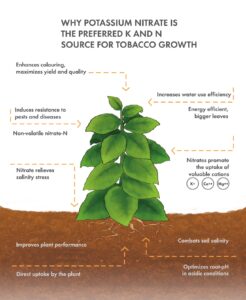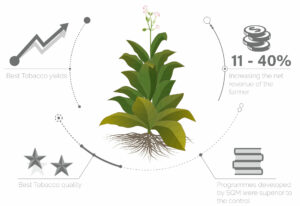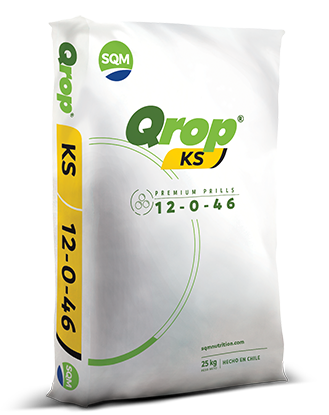Duncan Napier (Technical Manager at SQM South Africa) and his team visited British American Tobacco (BAT) in Uganda where BAT services 5.500 ha of Burley and 4.000 ha of Flue Cured tobacco out of a total of 15.000 ha (Burley and Flue). The growers are small scale since they have approximately only 0,5 hectare under tobacco. BAT employs the services of 100 technicians c.q. advisors to assist the growers who are classified as A, B, C and D growers depending on their general reliability and production record. Over the past 10 years, Burley yields have increased from 988 to 1.729 kg per ha whereas the number of growers has dropped from 30.000 to 20.000. From a servicing point of view, BAT would like to see this evolution to continue in the years to come.
The BAT service is based on inputs for outputs which means that BAT finances all the grower’s inputs and deducts this investment when purchasing the tobacco. BAT determines both the quantity and quality of the tobacco they need, which in turn determines how much fertiliser and other inputs they want to spend per hectare. Maximum yield is not always BAT’s top priority. All depends on market conditions and totals that they require for cigarette production at any given time.
For the 2013 season, the Burley growers initially had to stick to their standard practice of 7,5 bags of plant mix 14-14-20 and 2,5 bags of CAN per hectare (1 bag = 50 kg), but during the season BAT gave the A and B growers the option to apply 2,5 bags of potassium nitrate per hectare, over and above the 2,5 bags of CAN, to increase yields. As not all growers took up this option, SQM Africa was able to assess the difference between fields with and without the extra bags of potassium nitrate.

Figure 1. 50 kg bags of prilled potassium nitrate from SQM stored in a British American Tobacco warehouse in Hoima, West Uganda.

Figure 2. The field that did not receive the extra 125 kg of KNO3.
Seamus Gunton of BAT took us from Entebbe past Kampala to the region of Hoima in the Western region of Uganda where, together with the North West region, most of the Burley is grown. Along with Ambrose, the BAT area technician, we visited two A growers with adjacent fields, where one field had received the extra 125 kg of potassium nitrate. Both fields had the same soil preparation, were planted on the same day and both had plants from the same nursery. The result of increased plant size and apparent leaf yield was visibly significant and estimated at a 40% increase (Figures 2, 3 and 4).
BAT Uganda will assess the leaf production and quality differences between all the A and B growers that applied or did not apply the potassium nitrate since the extra application with potassium nitrate may allow BAT to achieve their goal to work with fewer growers and to reach higher production per hectare.

Figure 3. The tobacco plants on the field treated with KNO3 are significantly higher and have larger leaves.

Figure 4. The two adjacent fields. Even from a distance it is obvious that the field on the top of the picture has benefitted from the extra application with potassium nitrate fertilizer.




